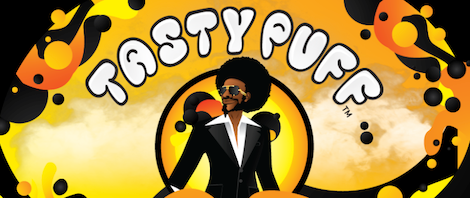THCV results from a different chemical pathway than THC. Geranyl pyrophosphate joins with divarinolic acid to make cannabigerovarin acid (CBGVA), which changes to tetrahydrocannabivarin carboxylic acid (THCVA) when exposed to the enzyme THCV. When THCVA is heated, it decarboxylates to THCV.
Like other cannabinoids, THCV has biphasic effects, meaning it has differing effects on the body at different doses and blood concentration levels. At low doses, THCV is a neutral antagonist of the CB1 receptor, binding to the receptor without causing any effects; however, at this low dose, it blocks other compounds (like THC) from binding to the receptor. THCV is also a CB2 agonist, binding to this receptor — which is mostly located in the immune system and gut — giving anti-inflammatory and analgesic effects.
Research shows at higher doses, THCV has the opposite effect at the CB1 receptor, binding to it and activating it, which expectedly should cause some psychoactivity. Interestingly, participants in a study who received THCV were unable to distinguish it from a placebo as they felt no intoxicating effects. In the same study, the subjects reported that when they were given both THC and THCV together, the effects of THC were weaker or less intense.
THCV is being investigated as an “anti-obesity and anti-type-2-diabetes” agent as it improved glucose intolerance and increased insulin sensitivity in obese mice. Additionally, the cannabinoid was shown to be a neuroprotective agent and relieved symptoms in an animal model of Parkinson’s disease.
Anecdotally, patients who have tried THCV-rich strains report appetite suppression, less anxiety, fewer tremors, and pain relief. These strains are often recommended to those suffering PTSD who want help decreasing anxiety without becoming intoxicated.
THCV is a secondary cannabinoid (THC and CBD being the primary cannabinoids) and most cannabis plants contain very small amounts. However, there are a number of strains that have, on analytical testing, shown to contain physiologically significant levels of THCV. These strains include Black Beauty, Doug’s Varin, Durbin Poison, and Malawi Gold.
Sources: WeedMaps




















